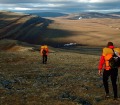Barefoot shoes have gained significant popularity in recent years, especially among health-conscious individuals and sports enthusiasts. They simulate the feeling of walking barefoot while still providing protection for the feet. But why is it important to understand foot anatomy before wearing barefoot shoes?
This article explores the importance of foot anatomy when wearing barefoot shoes. We will examine the structure of the foot, how barefoot shoes affect foot anatomy, discuss the pros and cons of these shoes, and finally, include expert opinions and recent studies.
Foot Anatomy
Bone Structure
The human foot consists of 26 bones, which can be divided into three main areas: the forefoot, midfoot, and hindfoot. These bones are connected by joints that allow for flexibility and stability. Particularly important are the foot arches, which distribute weight and cushion the impact when walking.
Muscles and Tendons
In addition to bones, muscles play a crucial role. The foot muscles, especially the intrinsic muscles, contribute to the stability and mobility of the foot. Tendons, such as the Achilles tendon, connect muscles to bones and are responsible for transferring force.
Joints
The numerous joints in the foot, including the ankle joint and toe joints, enable complex movements. Healthy joint function is essential for natural and pain-free movement.
What Are Barefoot Shoes?
Barefoot shoes are specially designed footwear that mimics the feeling of walking barefoot. They have a thin, flexible sole and offer little or no heel lift, keeping the foot in a natural position.
Historical Development
The idea of barefoot running is not new. In many cultures, walking barefoot or wearing minimal footwear was the norm. However, the modern movement towards barefoot shoes began in the early 2000s when awareness of natural movement patterns and their health benefits grew.
Key Features
Barefoot shoes are characterized by their lightness, flexibility, and thin sole. These features allow the foot to move freely and maintain its natural position. They provide protection from sharp objects while simultaneously enhancing tactile sensation and feedback from the ground surface.
The Impact of Barefoot Shoes on Foot Anatomy
Effects on Foot Musculature
Barefoot shoes promote natural muscle activity in the foot. Since the foot is not supported by a stiff sole, the muscles have to work harder to ensure stability and balance. This can lead to stronger and healthier foot muscles.
Changes in Gait
Wearing barefoot shoes also affects gait. Unlike traditional shoes, which often encourage heel striking while walking, people in barefoot shoes tend to strike more with the midfoot or forefoot. This reduces the impact forces on the joints and can lower the risk of injuries.
Long-Term Health Benefits
In the long term, wearing barefoot shoes can help prevent foot deformities, such as flat feet or hallux valgus. By promoting natural foot movement, they can also reduce back problems and joint pain.
Advantages of Barefoot Shoes
Improved Posture
Strengthening the foot muscles and changing gait can also improve posture. A natural foot position promotes an upright posture and can help reduce tension in the back and neck area.
Reduced Injury Risk
Barefoot shoes encourage gentler and more conscious movement. The reduced strain on the joints and improved perception of the ground can lower the risk of injuries, such as sprains or strains.
Natural Freedom of Movement
The flexibility and lightness of barefoot shoes allow the foot to move freely. This promotes natural foot movement, which can positively affect overall body mechanics.
Potential Disadvantages and Risks
Adjustment Period
Transitioning to barefoot shoes often requires an adjustment period. Since the feet, especially the muscles and tendons, may not be used to natural movement, initial discomfort or muscle soreness can occur.
Overuse Injuries
Without gradual adaptation, barefoot shoes can increase the risk of overuse injuries. As the foot muscles must work more intensively, there is a risk of overloading if the shoes are worn too long or during intense activities.
Improper Use
Barefoot shoes are not suitable for every situation. Running on hard, uneven surfaces or during certain sports activities, they may offer less protection than traditional shoes. Improper use can therefore lead to injuries.
Expert Opinions and Study Results
Scientific Findings
Scientific studies have shown that barefoot shoes can have positive effects on foot musculature and gait. A study from Harvard Medical School suggests that wearing barefoot shoes reduces impact forces and strengthens foot muscles.
Opinions of Orthopedists and Physiotherapists
Many orthopedists and physiotherapists see barefoot shoes as beneficial, especially for people with certain foot problems. However, they emphasize the need for gradual adaptation and the importance of proper application.
Practical Tips for Getting Started with Barefoot Shoes
Choosing the Right Shoes
Choosing the right barefoot shoes is crucial. Look for a good fit, sufficient toe space, and a flexible sole. Start with models that offer moderate cushioning to ease the transition.
Transition Phase: Tips and Tricks
Start slowly and initially wear the shoes only for short walks. Gradually increase the wearing time to strengthen your foot muscles and avoid overuse. Listen to your body and take breaks when necessary.
Avoiding Common Mistakes
Avoid wearing barefoot shoes immediately during intense sports activities. Give your feet time to adjust to the new load. Also, make sure to wear the shoes on suitable surfaces.
Future Developments and Trends
Innovations in Barefoot Shoe Technology
The development of barefoot shoes is continuously advancing, with increasing focus on advanced materials and improved design concepts. New materials that are both lightweight and durable allow manufacturers to develop even thinner and more flexible soles that protect the foot while preserving the barefoot feeling. Additionally, there is a growing emphasis on breathable and eco-friendly materials to increase comfort and sustainability.
Sustainability and Environmental Awareness
With the growing importance of sustainability in the fashion industry, more and more barefoot shoe manufacturers are adopting environmentally friendly production methods and recyclable materials. Some brands aim to develop fully biodegradable shoes that have no negative environmental impact at the end of their lifecycle. This aligns with the general trend towards more environmentally conscious consumption and is welcomed by an increasing number of customers.
Conclusion
Summary of Main Points
Wearing barefoot shoes has far-reaching effects on foot anatomy and overall well-being. By understanding foot anatomy and properly using barefoot shoes, numerous health benefits can be achieved, such as improved posture, reduced injury risk, and stronger foot muscles. At the same time, it is important to consider potential risks and plan an appropriate transition period to avoid overuse injuries.
Final Thoughts
Barefoot shoes offer a way to restore and promote natural foot function. They are a valuable addition to traditional shoes, especially for people who value healthy posture and natural freedom of movement. However, when introducing barefoot shoes into everyday life, it is crucial to do so thoughtfully and consider the individual needs and anatomical peculiarities of your own feet.













